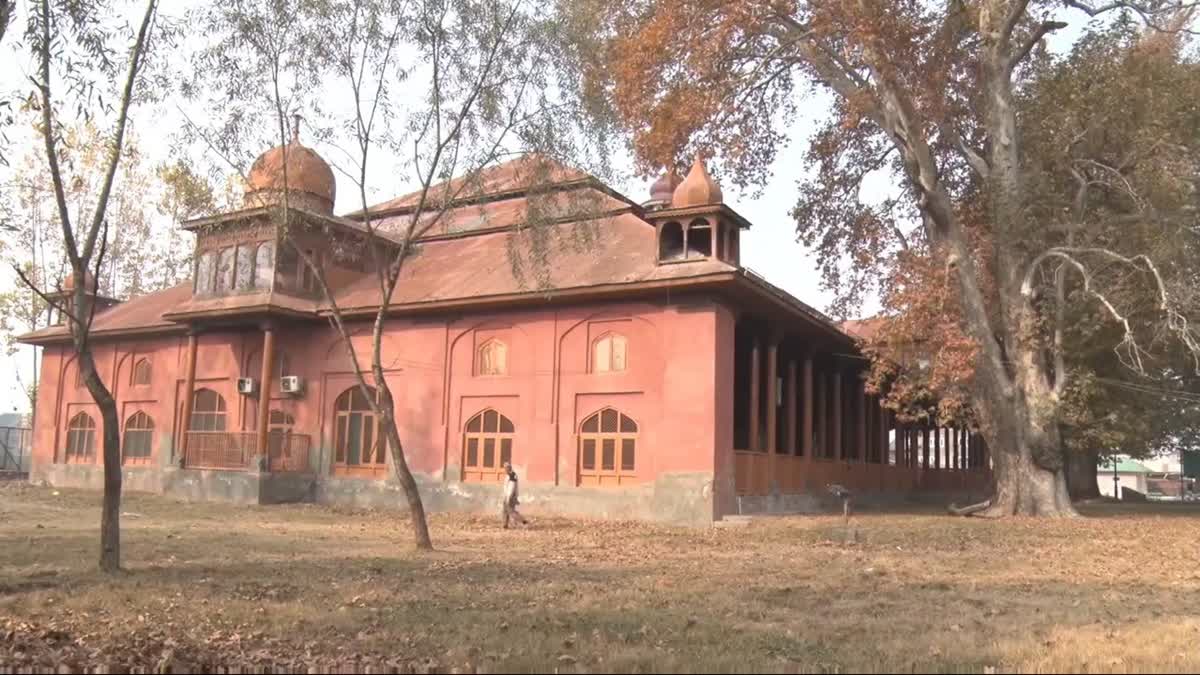Srinagar: As World Heritage Week is celebrated across the globe, 'Aali Masjid' in the heart of Srinagar in Jammu and Kashmir holds architectural and spiritual distinction and forms an important part of Kashmir's history.
The second-largest mosque in the valley, second only to Jama Masjid, rises majestically at the heart of Srinagar's Eidgah area. Established in 1470 AD during the period of Sultan Hassan Shah, this legacy is much more than just a centuries-old place of worship; it has come to represent a treasure trove of history, culture, and endurance.
History Behind The Mosque
Unlike most mosques, the Aali Masjid was built within an Eidgah, which means an open prayer ground. Such a decision was sensible since it provided Kashmiris a shelter where they could come together to perform congregational prayers during cold winter months. Known to locals as the 'Aeel Masjid', the architecture combines the best of Central Asian, Mughal, and Kashmiri elements, designed with brick, stone, and cedar wood.
Brief Period Of Neglect
The mosque was silent for nearly 40 years with no prayer, masked by neglect and a mix of historical distractions and socio-political turmoil. Going into the early 21st century, the mosque got its newfound lease on life.
According to Muhammad Saleem Beg, Convenor of the Indian National Trust for Art and Cultural Heritage (INTACH) in Jammu and Kashmir, extensive renovations during 2007 and 2008 restored the mosque to its former glory.
"The Grand Mosque was closed for several decades. However, the government later prioritized its preservation, reopening it for worshippers. Today, it is once again a vibrant space where both daily and Friday prayers are offered, drawing worshippers from near and far," Beg told ETV Bharat.
Local Myths
The Aali Masjid does not lack some local fable of their own. Stories about djinns within the walls of the mosque give it a mystical feel. A local resident recalls a chilling experience: "Once while I was giving the Fajr Azan, I heard a strange and frightening noise. It felt like the presence of heretics," he said.
Archaeologists, however, dismiss these tales as myths, emphasizing the mosque's cultural and historical significance.
The mosque is rectangular in shape with dimensions of 220 feet by 135 feet. It can accommodate over 2,000 worshippers. The towering pillars of cedar wood have masterly carvings on the wooden roofs. The beauty of the mosque survived many blazes during its 600 years of history such as reconstructions during the period of the Emperor Jehangir and Afghan rule of Sardar Gul Ahmad.
Ties With Mirwaiz Family
The Aali Masjid had deep ties with the Mirwaiz family credited with the establishment of the valley's first private school. Late Mirwaiz Molvi Muhammad Farooq, who was gunned down by militants in the 90s and his son, Mirwaiz Umar Farooq, delivered sermons here at special gatherings. The maintenance of the mosque was under the Jammu and Kashmir Auqaf with active contribution by the local community.
Read more:
- Revisiting Konark Sun Temple's Timeless Beauty During World Heritage Week
- World Heritage Week: 9 Royal Trains That Everyone Should Experience At Least Once
- The Saga of Kumbhalgarh Fort, The Impenetrable Jewel of Rajasthan’s Heritage
- J-K: 1884 Census Data, Old Govt Records Major Attraction At World Heritage Week Exhibition In Srinagar



